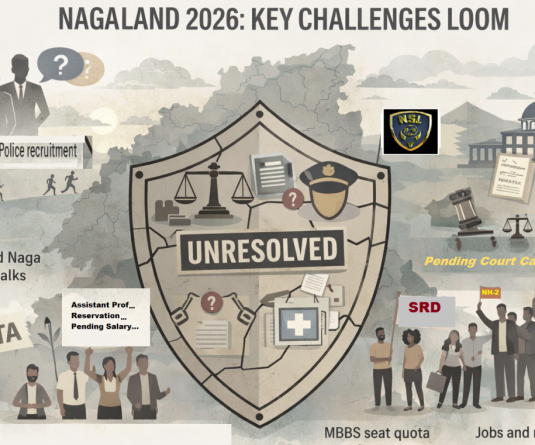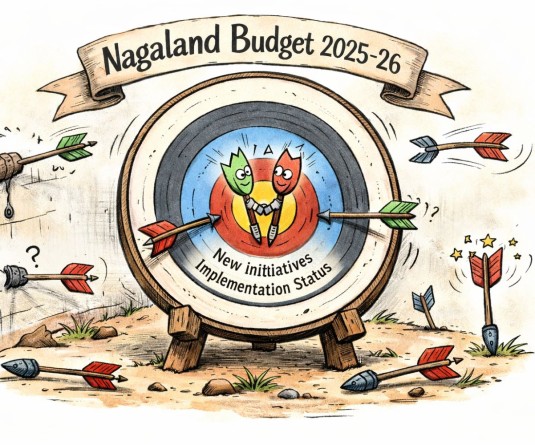
A look at school policies and parents views
Akangchila Longchar | Morung Express News
Sarah (name changed) is sixteen years old. Enrolled in one of Dimapur’s popular schools, for some months, her seniors have been taunting her, making remarks when she passes by, and spreading rumors about her. She tried to ignore the remarks but things just got worse. Finally, Sarah started to find excuses to not attend classes. This led to a lot of headaches, low grades, depression and ultimately bunking classes.
For most parents, surprisingly teachers and school authorities in Nagaland, this is the true narration of a classic example of school bullying. Bullying is fast becoming a fashion among today’s students. A trend gaining in popularity. Also, Cyber bullying is on the increase, which is very concerning with easy internet access.
Bullying is not an uncommon occurrence in most schools and some unfortunate students face it. However, bullying in schools is not taken seriously in Nagaland. In many cases it is found that when a child reports incident(s) of bullying, the parents, teachers and school authority do not pay heed. Also, bullying is hardly reported to school authority.
There are different types of bullying: verbal, emotional and physical. In countries like America, it has even extended to cyber bullying in the form of facebook, emails and chat messages. Many student suicides and school shootouts have also been linked to cyber bullying. In fact bullying is said to be the leading cause of school shootings.
School authority’s perspective:
A teacher of Mission Higher Secondary School Dimapur shared that last year she came across two incidents in the school which involved school bullying. In the first year, class seven students were harassing a non local student by tearing his school shirt pocket and making him do their homework etc. The student eventually had to leave the school without completing the year, as the situation only worsened.
In the second incident, the same teacher one day witnessed class eleven students slapping a non-local student, pushing him etc. When the teacher spoke to the victim about the incident, the victim rebuffed her, saying they (the bullies) were just playing and meant no harm. This, she said was a result of fear. She recommends that it is for the teachers, school authority and parents to correct the bullies and added that punishment is not a good idea, and it is better to make the bullies and the bullied understand by talking to them personally.
Father Sunil, Principal of Holy Cross Higher Secondary School Dimapur, stated that bullying is not yet rampant in Nagaland. “But we have seen some cases,” he said. Father Sunil cites an incident where some class nine girl students beat up one of their classmate. On school policy towards handling bullying issues, he admitted that the authorities try and resolve it. “Students feel more comfortable sharing their problems with their teachers. We have a counselor for the students of our school,” he said.
Chuba Longchar, Vice Principal of Cornerstone Higher Secondary School, however stated that the school is yet to witness an incident of bullying. He opined that academic bullying happens with students, who hail from villages, which he says is mainly a miscommunication problem and not bullying per se. He said that the school has a counseling team and before any disciplinary action is taken against students, they are made to visit the counseling team and express if any problems are being faced.
Parent’s perspective:
Nikali, mother of three teenage girls shared that everyday at least one of her daughters has a complaint about school.
Worried, she shared that it would be a good idea for schools or Nagaland Education Department to introduce awareness programs on anti-bullying. “I think teachers as well as parents should be sensitized on this issue as it is a new subject and none of us have an idea about it.”
Lanu, another parent, feels that rules and regulations on bullying should be posted in every school. He feels that the issue should be addressed in parent-teacher meetings. “A lot of parents shrug off that our children do not face these fancy new age problems. But it has happened to one of my kids, who was being harassed for so long by his peers and I never knew about it until he started developing an anger problem,” said Lanu.
It is said that the best remedy to solve the problem of school bullying starts at home. Hence, parents play the most pivotal role here. A counselor shares that the idea of bullying is borrowed by children from their parents. Also children who lack discipline and do not receive enough warmth and care from their parents are said to develop a nature of bullying. Studies also revealed that bullying is a root cause of discipline problems for both the victim and bully. Bullied students have behavior problems after the bullying, and those problems get worse over time
Bullying among students is considered a part of ‘growing up’. And it is, if it is on a harmless level and of friendly nature. However, that type of bullying is passé now; what with modern technologies, allowing a bully to reach his victim beyond classrooms. All the more reasons, to demand a zero tolerance policy for bullying in schools! It is very important to provide a safe and secure environment for our children in schools. We really must focus our attention to school bullying, starting now!!






